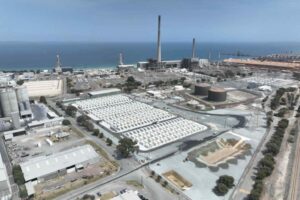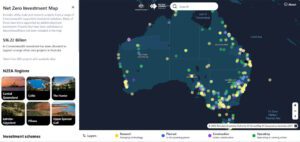Just over a year ago, Australia concluded a unique public policy experiment. For the preceding two years and two weeks, it had put a price on a range of greenhouse gas emitting activities, most significantly power generation.
Now, 12 months since the price was removed, is a good time to assess the results of the experiment.
The immediate effect of the carbon price was to increase the costs faced by most electricity generators, by an amount that varied between individual power stations depending on that station’s emissions intensity (the emissions per unit of electricity). These costs were then passed on in higher prices to consumers.
Simple economics suggests that two effects should have followed.
First, less emissions-intensive generators should have been able to increase their market share, resulting in an overall reduction in the average emissions intensity of electricity.
Second, higher prices should have led consumers to reduce their consumption, cutting the total demand for electricity. When the price was removed, both of these effects should have been reversed.
Let’s look at what happened in the National Electricity Market (NEM), which is the wholesale electricity market in every state and territory except Western Australia and the Northern Territory.
My analysis, using detailed NEM operational data from the Australian Energy Market Operator (AEMO) finds that emissions intensity, which was increasing until shortly before June 2012, fell continuously (see graph below) for most of the two years to June 2014. Since then, it has increased consistently. All these changes were caused by changes in the market shares the different types of generation, just as expected.

Before, during and after the carbon price: relative changes in moving annual values for the National Electricity Market.
Hugh Saddler, Author provided
Generation by both black and brown coal decreased under the carbon price, with the more emissions-intensive brown coal falling faster. Over the past year both have increased, with brown coal growing faster. It is plausible to assume that, had the carbon price remained, the earlier trend would have continued.
The rise and fall of hydro
Much of the gap left by reduced coal-fired generation between 2012 and 2014 was filled by increased hydro generation, particularly in Tasmania, which supplies about 60% of total NEM hydro generation. In 2013-14, hydro generation was 40% higher than two years earlier, but 2014-15 it fell back to below the 2011-12 level.
While these changes appear to have been largely driven by the carbon price’s introduction and removal, it would be wrong to assume that the level of hydro output achieved in 2013-14 would have continued had the price been retained.
The average output of a hydro power station is determined not by the capacity of the station but by how much energy it can access in the form of stored water, which in turn is determined by rainfall and run-off into hydro dams. This storage gives hydro generators some flexibility to choose when to generate.
When the carbon price was introduced, hydro generators, with no carbon price to pay, were able to make windfall profits.
But the hydro generators, especially Hydro Tasmania, anticipated that the carbon price would be short-lived and so generated as much as they could while it was in place. Hydro Tasmania achieved its highest ever annual profit in 2013-14, exporting large quantities of electricity to Victoria while also supplying Tasmanian demand.
In doing so, it ran down its energy in storage from 61% of maximum level in October 2012 to 28% in June 2014. With more certainty of a long-term carbon price, they hydro generation industry may not have pushed itself so hard.
Consumer demand was (mainly) oblivious to carbon pricing
There is no clear trend in the rate of demand reduction after the carbon price was introduced. Separate analysis has shown that the demand reduction seen in the NEM since 2010 was due not to the carbon price but rather to a dramatic reduction in household electricity consumption and the closure of two aluminium smelters.
The sharpest change in demand occurred between 2010 and 2011, a period that saw price increases in most state markets, caused by a hike in transmission and distribution costs that was considerably larger than the price increases due to the carbon price.
This was also a time when higher electricity prices became a high-profile topic of political debate, both because of the price rises and also because of a successful scare campaign about the possible effects of a carbon price. It seems that many householders were looking to cut their power use even before the carbon tax arrived.
For five years, from 2010 to 2014, residential and business consumers steadily reduced their electricity consumption, largely because of improved energy efficiency. It is possible that, with the carbon price now gone and emissions rising once more, this trend has now come to an end.
Perhaps the price decreases have persuaded many consumers that they have now done enough, although after five years of growing energy efficiency it is equally possible that the range of efficiency measures has simply been largely exhausted.
The take-home messages
If we are thinking of the carbon tax as an experiment, I have drawn four main conclusions.
The first is that many factors besides the carbon price have influenced changes in the behaviour of electricity consumers and suppliers, so it is not possible to isolate the effect of the carbon price alone. The volatility caused by the short duration of the carbon price may even have been a factor in itself.
Second, notwithstanding this complexity, the carbon price induced the sorts of changes in both supply and consumption that economic theory would have predicted. This is consistent with an earlier analysis done immediately after the end of the carbon price.
Third, the rather modest size of the changes is also consistent with the theoretical expectation that major changes in electricity markets depend on large-scale investment. This means that larger impacts of a price on carbon will only appear if the policy is maintained over the long term.
Fourth, and following from the three preceding conclusions, achieving larger and faster emissions reductions will require a wide range of policies, all working in the same direction. A price on emissions, whether through an emissions trading scheme or a tax, will be a key component of such a suite, but only one component.
This is the approach being taken by all of the many countries and sub-national jurisdictions that have introduced emissions pricing.
Campaigners for the return of Australian carbon pricing shouldn’t lose sight of the fact that other policies will be needed too.
Hugh Saddler is Research Associate, Centre for Climate Economics & Policy at Australian National University.
This article was originally published on The Conversation.
Read the original article.








